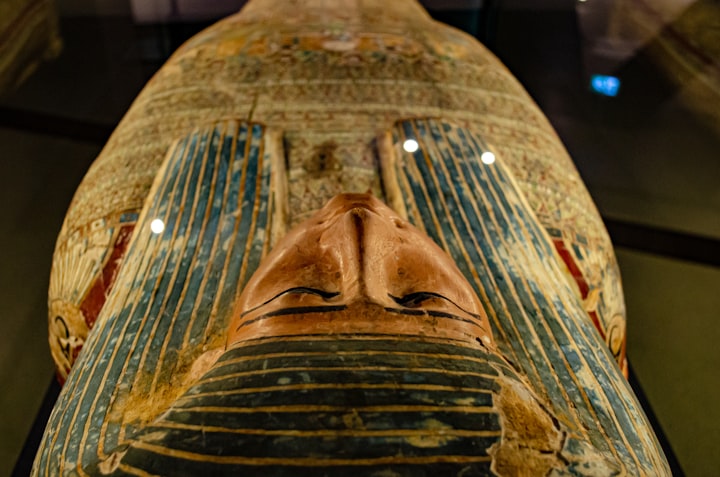
Mummification was a process that the ancient Egyptians used to preserve the bodies of their dead. It was an important part of their religious beliefs and was believed to be necessary in order to ensure that the soul of the deceased could continue on to the afterlife. Mummies have fascinated people for centuries, and the process of mummification has been a topic of much speculation and curiosity. In recent years, however, researchers have been able to shed new light on the secrets of the mummification process, revealing fascinating details about this ancient practice.
The process of mummification was a complex and involved one, and it varied somewhat depending on the time period and the social status of the individual being mummified. Generally, however, the process involved several key steps. The first step was to remove the organs from the body. The brain was removed through the nose using a hook, and the other organs were removed through a small incision in the left side of the body. The organs were then cleaned and preserved in jars, which were placed in the tomb with the mummy.
The next step in the process was to dry out the body. This was done by packing the body with a substance called natron, which is a type of salt. The body was then left to dry out for several weeks. Once the body was completely dried out, it was wrapped in linen bandages. The bandages were often coated with resin to help preserve the body and to make the wrappings more durable.
One of the biggest mysteries surrounding the mummification process was how the ancient Egyptians were able to preserve the bodies for so long. It was long believed that the process involved the use of chemicals such as formaldehyde, but recent research has shown that this was not the case. Instead, it appears that the key to the preservation of the bodies was the use of natron. Natron was a common substance in ancient Egypt and was used for a variety of purposes. Its ability to dry out the body and prevent the growth of bacteria made it an ideal substance for use in mummification.
In addition to the use of natron, the ancient Egyptians also used a variety of other substances in the mummification process. These included myrrh, cassia, and other aromatic substances that were used to help mask the odor of the decaying body. The resin used in the wrapping of the body was also believed to have antibacterial properties, which helped to further preserve the body.
Another important aspect of the mummification process was the use of amulets and other protective items. These were placed in the tomb with the mummy and were believed to offer protection to the deceased in the afterlife. Amulets were often shaped like animals or other objects and were made from a variety of materials, including gold, silver, and precious stones. The use of amulets and other protective items was an important part of the religious beliefs of the ancient Egyptians, and was believed to be necessary in order to ensure a successful journey to the afterlife.
One of the most interesting aspects of the mummification process is the way in which it varied depending on the social status of the individual being mummified. Members of the royal family and other members of the elite were often mummified using more elaborate techniques and with more elaborate burial items. For example, the body of King Tutankhamun was found to be covered in gold and precious stones, and was surrounded by a variety of other treasures. By contrast, the bodies of ordinary people were often mummified using simpler techniques and were buried with fewer items.
Once the body was fully dehydrated, it was time for the wrapping stage. Linen bandages, often soaked in resin or other substances to aid in preservation, were carefully wrapped around the body, with special attention paid to the head, hands, and feet. In some cases, amulets and other small items were placed between the layers of bandages to provide additional protection for the deceased.
Finally, the wrapped body was placed in a series of coffins or sarcophagi, often elaborately decorated with images of the deceased and inscriptions invoking the gods and providing instructions for the afterlife. These coffins were typically placed inside a tomb, which was sealed and protected from the elements.
Despite the sophisticated and lengthy nature of the mummification process, it was not reserved solely for the elite. While the wealthy were able to afford more elaborate mummification procedures and more elaborate tombs, even the poor could receive basic mummification treatments. In fact, the process was so widespread that by the time of the New Kingdom, a specialized class of embalmers had emerged, responsible for carrying out the process on behalf of the general population.
Today, the ancient Egyptian practice of mummification continues to captivate and fascinate people around the world. Through careful study of mummies and other artifacts, scientists and historians have been able to gain a deeper understanding of ancient Egyptian culture and beliefs. While the mummification process was undoubtedly complex and time-consuming, it was also a powerful symbol of the Egyptians' faith in the afterlife and their commitment to preserving the bodies of their loved ones for eternity.
About the Creator
semsem
Blogger and a writer of free verse






Comments
There are no comments for this story
Be the first to respond and start the conversation.